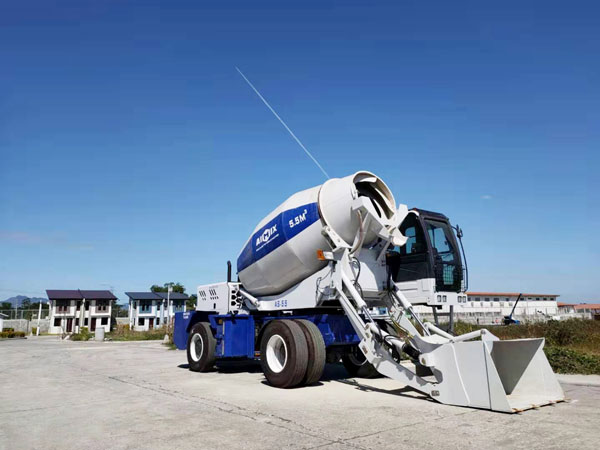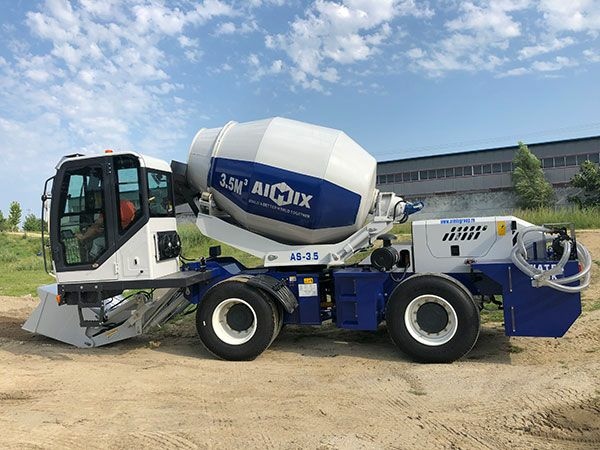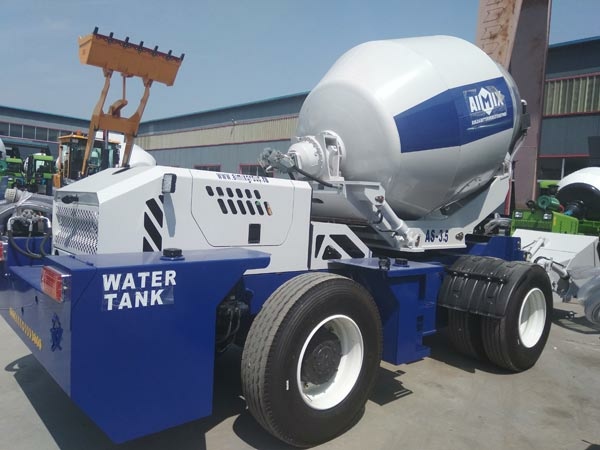


Understanding the labor requirements of concrete self-loading mixers can help you optimize your workforce and improve project efficiency.
The concrete self loading mixer has revolutionized the construction industry by combining the functions of loading, mixing, and transporting concrete into a single machine. This efficiency raises the question: how many workers will a concrete self loading mixer need? Understanding the labor requirements can help you optimize your workforce and improve project efficiency. This blog will explore the manpower needs for using a concrete self loading mixer and provide valuable insights for construction project managers.
To determine the number of workers required, it is essential to understand what is self-loading mixer equipment. These machines are designed to perform multiple tasks, which influences the manpower needed.

A concrete self loading mixer integrates several operations, including loading raw materials, mixing concrete, and transporting the mix to the construction site. This integration reduces the need for separate equipment and specialized labor, streamlining the entire process.
The operator can control the entire process from the cabin, using advanced controls and instruments. This centralization of operations significantly reduces the number of workers required.
Key components of a self-loading mixer machine include the loading bucket, mixing drum, water tank, and operator’s cabin. The loading bucket is used to load materials such as cement, sand, and gravel into the mixing drum. The mixing drum then mixes these materials to produce high-quality concrete, with the water tank providing the necessary water for the mix.
The operator’s cabin is equipped with controls that allow the operator to manage the entire process efficiently, reducing the need for additional workers.
Understanding the functionality and components of a self loading mixer helps in determining the manpower requirements. Typically, these machines require fewer workers compared to traditional concrete mixing methods.
Most modern self loading mixers are designed to be operated by a single person. The operator controls the loading, mixing, and transporting functions from the cabin. This reduces the need for additional labor and simplifies the operation process.
The operator needs to be skilled and trained in operating the machine to ensure efficient and safe operation. Training programs are often provided by the manufacturer or supplier to equip operators with the necessary skills.
While a single operator can manage the primary functions of the self loading mixer, additional support workers may be required depending on the project size and complexity. These support workers assist with tasks such as loading raw materials, site preparation, and quality control.
For smaller projects, one or two support workers may suffice. For larger projects, the number of support workers may increase to ensure smooth and efficient operation.

The reduced manpower requirements of a concrete self loading mixer offer several benefits for construction projects. These benefits contribute to improved efficiency, cost savings, and streamlined operations.
By reducing the number of workers needed, self loading mixers help lower labor costs. This leads to significant cost savings, especially on large-scale projects. The savings can be allocated to other areas of the project, enhancing overall efficiency.
A single operator can manage multiple functions, leading to increased productivity. The integrated design of the mixer allows for faster completion of tasks, reducing project timelines and improving overall productivity.
The integration of loading, mixing, and transporting functions into a single machine streamlines the entire operation process. This reduces the need for coordination between different teams and equipment, leading to smoother and more efficient operations.
A concrete self-loading mixer typically requires a single operator to manage the loading, mixing, and transporting functions. Additional support workers may be needed depending on the project size, complexity, and site conditions. The reduced manpower requirements offer several benefits, including cost savings, increased productivity, streamlined operations, and improved quality control. By understanding the factors influencing manpower needs, you can optimize your workforce and enhance the efficiency of your construction projects.
